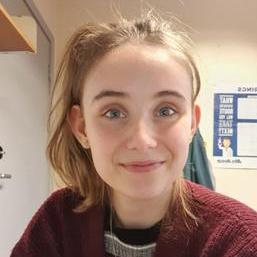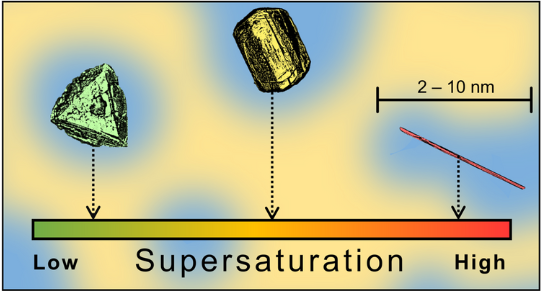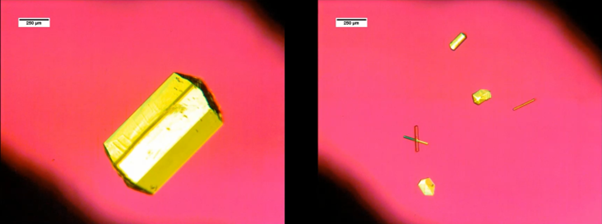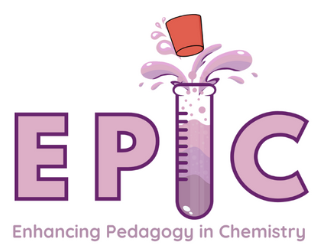Staff profile

| Affiliation | Telephone |
|---|---|
| Lecturer in the Department of Chemistry |
Biography
Dr Jenny Maunder graduated from Durham University with a MChem (Hons) degree in 2018. Upon her graduation, she remained at Durham to complete a PhD as part of the Soft Matter and Function Interfaces (SOFI) Centre for Doctoral Training (CDT) under the supervision of Prof. Sharon Cooper. In 2024 she completed her PhD work in the area of crystallisation in confined phases.
In January 2023, Dr Maunder began a Teaching Fellowship in the Department of Chemistry at Durham University and in October 2023 was appointed as Lecturer (Teaching and Education Research) in Physical Chemistry. Her work currently involves the development of undergraduate taught modules. Primarily, this has included the redevelopment of second- and third-year teaching laboratory courses, working as part of a collaborative team.
Dr Maunder is passionate about science communication and is the chair of the Chemistry Communications committee. In this role, she has helps develop communication networks within the department, advertising the work of the community and developing news outputs for the department.
Research Interests
Crystallisation in Confinement
A theory of thermodynamic control over crystallisation has been established for both organic and inorganic materials, allowing the most stable polymorphs to be synthesised under ambient conditions. This control arises from the use of surfactant microemulsions, where nanoscale droplets of one phase are suspended in another. Through this, solute may be confined, slowing crystal growth to allow only the most stable nuclei of the most stable polymorph to persist and grow.
Throughout her PhD, Dr Maunder expanded this technique utilising Structured Ternary Fluids (STFs). These are complex mixtures that, at certain compositions, contain nanostructures similar to those of surfactant microemulsions, often leading to them being described as surfactant-free, or ultra-flexible microemulsions. Her thesis revealed that STF nanostructures may be used to achieve a similar degree of thermodynamic control, where STFs comprised of water, octanol and ethanol could selectively grow the most stable polymorph of glycine, γ-glycine. She also showed that STFs have potential for use in polymorph screening, where all three ambient temperature polymorphs of glycine could be selectively targeted from a single STF by tailoring the glycine supersaturation.

Crystallisation Kinetics
Typically, in bulk solution, crystallisation is governed by a slow nucleation rate and fast crystal growth mechanism that leads to a lack of polymorphic control and can promote amorphous product precipitation. During Dr Maunder’s doctoral research, she investigated the use of STFs to induce fast nucleation rates and slow crystal growth mechanisms to promote control over the crystallisation process, assessing crystal nucleation and growth kinetics in-situ.

In 2025, Dr Maunder began research work alongside Prof. Aurora Cruz-Cabeza and the Cambridge Crystallographic Data Centre (CCDC) to generate experimental data on crystal growth kinetics and morphology to support the validation of cutting-edge digital tools designed to improve drug development. By studying the impact of factors such as temperature, solvent choice, and supersaturation on crystal formation, the research will help ensure that digital models reflect real-world conditions.

Chemical Education
In her education-track position at Durham University Dr Maunder has been heavily involved in the development, design and implementation of high-quality teaching across a variety of environments from leading and supporting practical laboratories, to lecturing a 1st year chemical kinetics course, to delivering classroom-based workshops and tutorials. Her research in this area stems from the constant need to innovate teaching methods, evolving the delivery of teaching to keep up with the landscape in which the students exist, and using student and staff feedback to tailor methodologies.
In this role, she has developed a new and innovative course structure alongside other members of the Ehancing Pedagogy in Chemistry (EPiC) research group to integrate the classically 3-stranded IOP courses into a single “Integrated” practical course, giving a true appreciation of the interdisciplinary nature of chemistry. Additionally, she is also involved in the development of evaluation methods in practical chemistry. She has helped redesign assessment structures in multiple courses to introduce more diverse assessment. For example, by moving away from purely lab report style submissions to a more varied selection of lab reports, oral and poster presentations, and viva-style interviews for laboratories, we will give students a broader set of learning experiences and challenges. This multimodal approach to assessment promotes inclusivity of learning styles, and awareness of the benefits and constraints of different communication styles and prepares students for workplace communication.

Teaching
Main Teaching Responsibilities
- Module Leader and Senior Demonstrator: Practical Chemistry 2: Measurement
- Module Leader and Senior Demonstrator: Practical Chemistry 3: Measurement
- Senior Demonstrator: Practical Chemistry 2: Integrated
- Senior Demonstrator: Practical Chemistry 3: Integrated
- Lecturer: Chemical Kinetics (Core Chemistry 1)
- Tutorials: Core Chemistry 1 (Physical)
- Tutorials: Core Chemistry 2 (Physical)
- Supervision (Chemistry BSc Dissertation, Chemistry Literature Perspective, Chemistry Research Project)
Research interests
- Chemical Education
- Crystallisation
- Polymorphism
- Crystal Morphology
- Structured Ternary Fluids
- Microemulsions
Publications
Journal Article
- Structured ternary fluids as nanocrystal incubators for enhanced crystallization controlMaunder, J., Aguilar, J., Hodgkinson, P., & Cooper, S. (2022). Structured ternary fluids as nanocrystal incubators for enhanced crystallization control. Chemical Science, 13(44), 13132-13140. https://doi.org/10.1039/d2sc04413g

